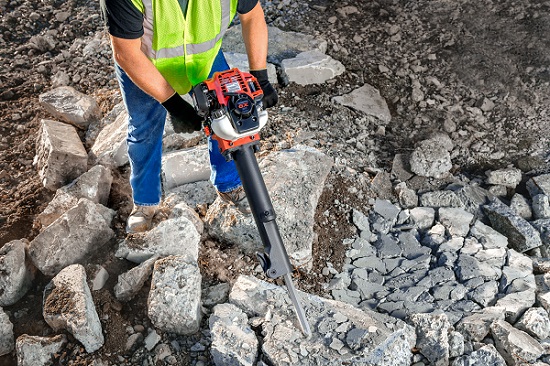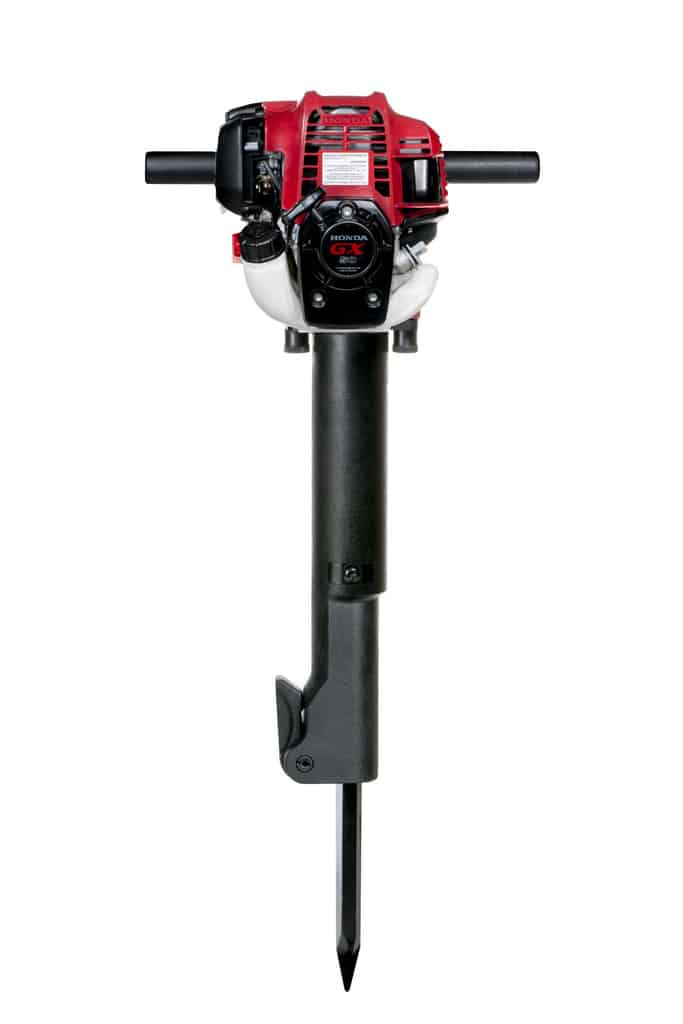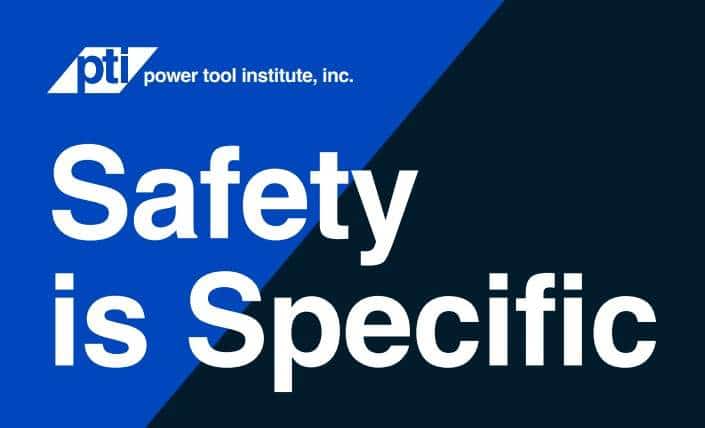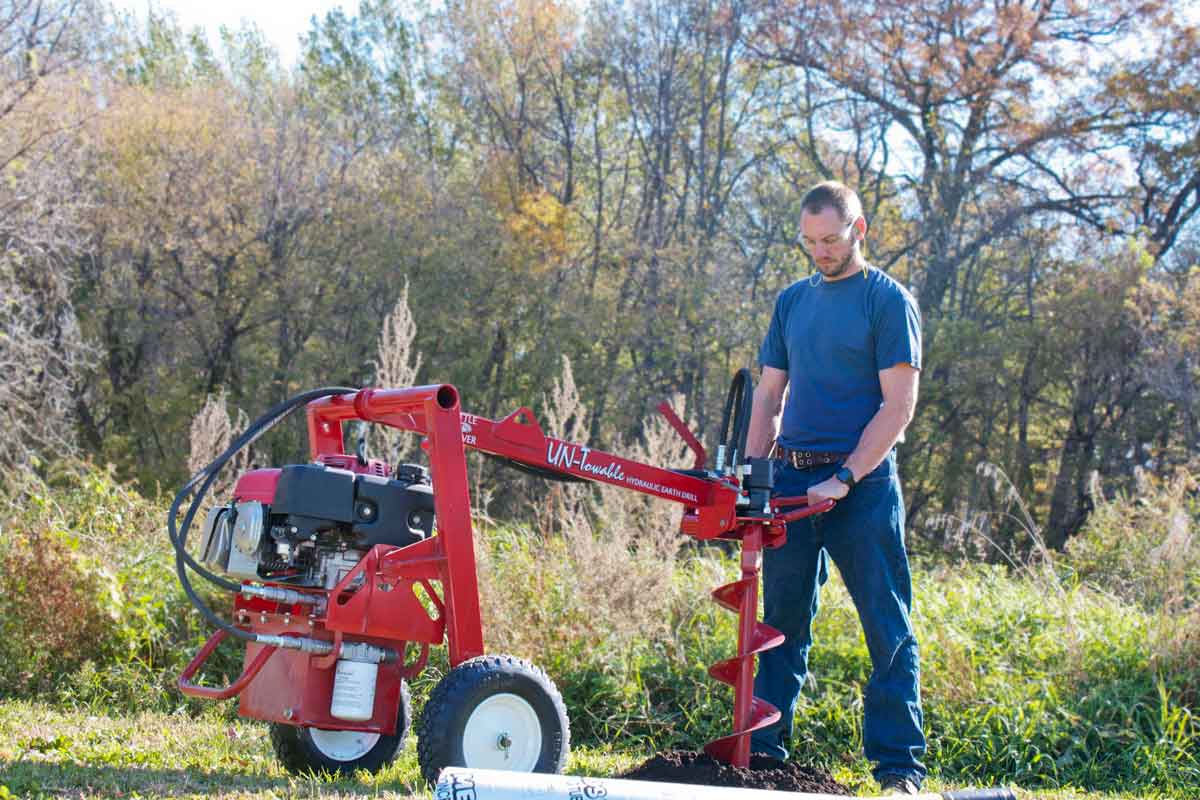A Jackhammer Adventure — the Journey to Finding the Right One

Choosing the right tool for the job is sometimes the difference between success or failure even if you don’t appreciate the gravity of the decision at the time. There is nothing more disheartening than realizing your project was doomed from the get-go due to one poor choice, which you might have even pinned as an afterthought at the time.
There are many power tools out there. Most of them perform the task they were designed for admirably. So wouldn’t that mean you’re good to go no matter which you choose? Not always!
If you’re doing demolition work, or just breaking up a sidewalk or expanse of concrete, you’ll want the assistance of a jackhammer. You might think that that particular decision is an easy one. But you might be surprised to understand that not all jackhammers are created equal.
Aren’t All Jackhammers the Same?
Believe it or not, jackhammers vary wildly depending on the model and the task they were designed for. There are light, medium, and heavy models, which work best when applied to the right type of job. Yet, beyond those categories, there are further distinctions based on what powers the jackhammer.
You wouldn’t bring a heavy jackhammer to a light demolition job (think of demoing the cement entrance to someone’s house) and you wouldn’t bring a light jackhammer to a large scale demolition job — you’d be laughed off the site.
As with any adventure, and as the hero of the story, you must first choose your weapon wisely. But what are your choices?
What Types of Jackhammers Are There?
While many jackhammers are rated for either light, medium, or heavy-duty work, the most common way to set them apart is by their power source. Different power sources afford a wider range of power ratings, so that category often overlaps. It’s typical to put jackhammers in three categories.
Pneumatic Jackhammers
The classic, heavy-duty option
The typical pneumatic jackhammer is powered by air. The engineering dates back to the 19 th century. The engineering is simple yet clever — compressed air powers a piston, which in turn strikes the shaft, which features a drill or a bit of some kind at the end. The repeated striking of that shaft drives the drill at a high rate of speed, which breaks up rock, concrete and many other materials.
Pros:
- Pneumatic jackhammers are powerful tools
- Their engineering is tried-and-true; there are no surprises here
- While loud, silencing sleeves can be but around the jackhammer to help deaden the noise
Cons:
- While powerful, they can be overkill or in some cases, hard to transport to a site
- Even with a silencing sleeve, they are loud due to the air compressor and the action of the
piston - They are bulky and sometimes won’t fit into a tight space
- Air compressors are bulky and add another danger to a site but they are needed to power a
pneumatic jackhammer - The constant, severe vibration from a pneumatic jackhammer is bad for your body
Electric Jackhammers
The ultra-simple, cost-effective tool that can sit in your shed
Electric power tools have been around for a long time. They’re versatile tools in their ultra-portability and simple, low-maintenance design. However, where an electric jackhammer benefits from its minimalist approach, it typically falls short in raw power due to its weak, torque-based interior locomotion. Without the strong action of a piston, you’ll always hit a wall when it comes to its output of force.
Pros:
- Extremely portable and simple
- Virtually no maintenance
- Less power means less noise
Cons:
- Not as powerful as every other variety of jackhammer
- Requires an electric power source, which limits its range
- Less expensive but less durable than a pneumatic jackhammer
Gas-Powered Jackhammers
 A great compromise between power and portability; the most versatile
A great compromise between power and portability; the most versatile
The gas-powered jackhammer is beginning to emerge into the construction industry as a reliable compromise between the sheer power of the pneumatic jackhammers and the ultra-portability of the electric jackhammer. Typically, the tool uses the piston-and-shaft approach much in the same way as a pneumatic jackhammer. The biggest difference is in what powers the piston. In this case, it’s a 4-stroke gasoline engine, which is lightweight and attached to the jackhammer, unlike with the air compressors in pneumatic jackhammers.
Pros:
- Extremely portable and simple, just like its electric cousin
- The 4-stroke engine provides plenty of raw power
- The absence of an air compressor means much less noise
- No extraneous hoses or cords, as is the case with pneumatic and electric jackhammers
- Can be rented at many equipment yards
Cons:
- In some cases, certain pneumatic jackhammers will out-power a gas jackhammer
- An emerging technology — certain brand may be unreliable
- More vibration than electric, less than pneumatic—make sure you use while wearing gloves!
Which Jackhammer is Right for My Project?
Now that you’ve had a crash course on the three types of jackhammers on the market, you may have a good idea of which model you need for your particular job. However, you’re on an adventure — if we didn’t act as the wizened guide on your jackhammer journey then we’d be missing out on an opportunity to break out the robe and wizard hat! With that said, which jackhammer is right for a given project? Let’s start with the smallest jobs and go up.
Minor Home Landscaping
Let’s say you have an old concrete or cement entryway you need to get rid of or a patch of sidewalk that’s in disrepair. What jackhammer would work best for this situation?
Answer: We’d suggest either an electric or gas-powered model. Both should be available at your local rental yard and both are simple to use and rated for this level of demolition. If you’re a glutton for punishment and hate spending money to make your life easier, you might even try taking a sledgehammer to it.
Major Home Landscaping
Once you go beyond a couple of square feet and get into larger jobs you’ll want to reevaluate the type of jackhammer you bring to the party. For example, let’s say you have a large slab of concrete to dispose of from an old patio or storage shed.
Answer: It’s probably best to put the electric jackhammer away and stick to a highly-rated gas-powered jackhammer such as the GB-90 from US Hammer. While a pneumatic jackhammer could work it is overkill for this type of work.
Small-to-Medium Demolition Work
We’ve gone from household maintenance and renovation into professional work. Any kind of demo work, no matter how small, should be handled by a team of professionals. With higher stakes, it’s more important than ever to have the right tools. A typical example of this type of work would be demoing a house — think of the thick foundation that would need to be broken up—what jackhammer would work best for this type of work?
Answer: Do away with the electric jackhammer—it can no longer keep up. Stick with a powerful gas-powered jackhammer (4-stroke engine) or a pneumatic jackhammer. Bear in mind that pneumatic jackhammers are hard to use in enclosed spaces due to their bulk and are much louder when used inside.
Large Demolition Work
If you’re doing large scale demolition, then you probably don’t need anyone to tell you how to do your job. With large scale demolition, think civil engineering projects and other huge structures that need to come down so something else can be put up. What jackhammer do you need?
Answer: Gas-powered jackhammers should still work for you, although with more space and a properly prepared job-site you should be able to run a pneumatic jackhammer unhindered. Large projects are often multi-disciplined, so you may even find yourself enlisting the help of both types of jackhammers—gas-powered models would work for enclosed, remote spaces while pneumatic jackhammers can do all the big and easy work.
Choose Your Own Adventure but Choose Wisely
Both electric and gas-powered jackhammers are versatile tools for everyday work that might pop up every year or so. They can both be rented or easily stored and provide enough power for the types of jobs you’d find on your property. While they are more expensive, gas-powered jackhammers pack a little more punch and can take you further than the electric variety.
Pneumatic jackhammers are best relegated to big job sites that already use an array of power tools and construction equipment due to their large and varied scope. While they’re powerful, they’re loud and often overpowered for many jobs.
Chris Galloway is owner of Pioneer Machinery Equipment Rentals.


